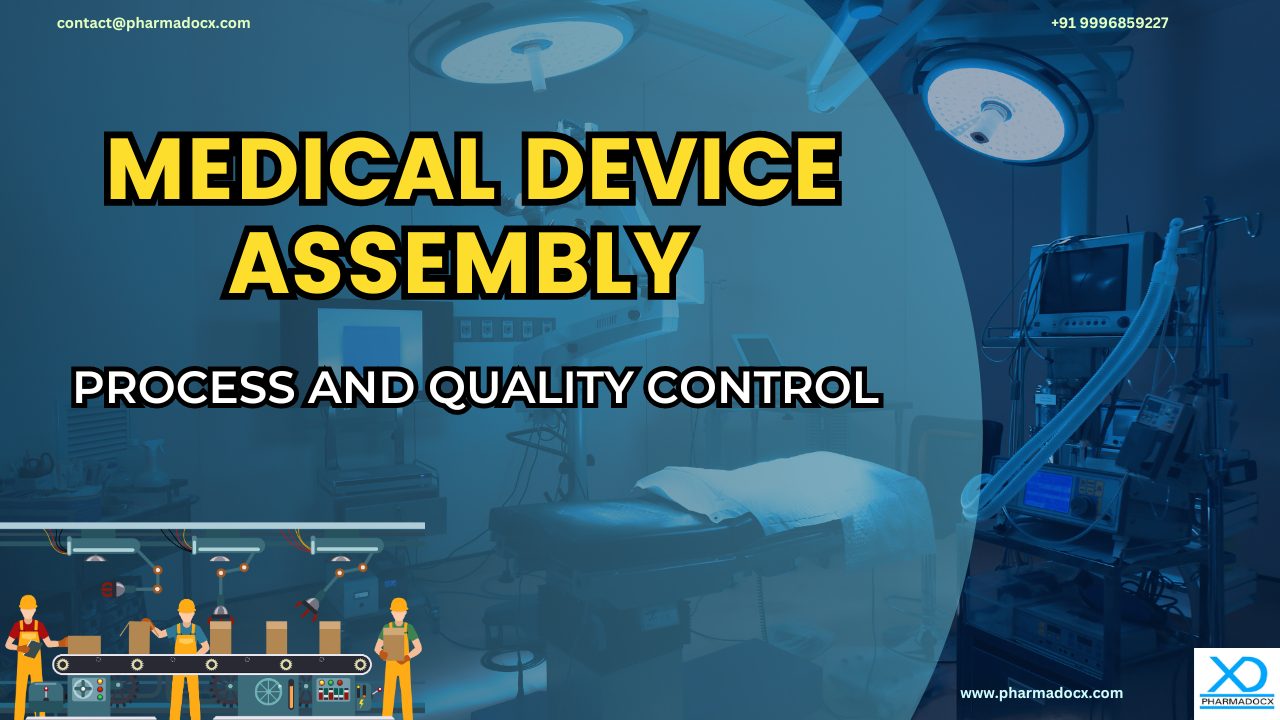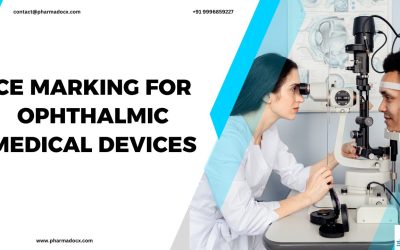With advancement in technologies, medical devices have become complicated and intricate with several parts. Manufacturers need to assemble various parts of the medical device to produce a functioning finished product. Hence, medical device assembly quality control requires special attention while assembling the various components. It is important to consistently deliver high quality and safe medical devices to protect patient health. Medical device quality control is vital to avoid product failures, defects, and field failures. This blog provides an overview of various quality control measures that need to be taken while assembling medical device components.
What is medical device assembly?
Medical device assembly is an essential step in the medical device manufacturing process. It is the process of assembling various components, such as mechanical or electrical parts, to produce the complete medical device. It is of utmost importance to permanently and safely attach all the parts together so that the finished product can function properly. Medical device assembly is one of the challenging aspects of the manufacturing process. Incorrect attachment of parts could lead to leakage of internal device fluids and medication or cause the medical device to malfunction. This will be detrimental for patients and medical professionals. Thus, properly assembling medical device components is pivotal for manufacturing reliable and effective medical devices. This in turn is vital for patient safety. Even manufacturing a simple single use medical syringe requires proper attachment of the stainless-steel cannula to the plastic hub.
Materials commonly used in assembling medical devices
- Nylon
- Polyether block amide
- Cyclic olefin polymers and copolymers
Techniques commonly used for medical device assembly
For joining medical device plastic parts, several assembly techniques, from mechanical to chemical bonding, are used.
- Ultrasonic welding
- Solvent welding
- Adhesives
- Mechanical fasteners
Challenges faced while assembling medical devices
The techniques commonly used for assembling medical device components have their own set of challenges. The following is some of the cons of the assembling techniques:
- Ultrasonic welding: In this technique, plastic substrates are heated and the parts are held together under pressure. The two parts fuse as the plastic cools. However, gaps may remain between the two parts owing to bond gap variances.
- Solvent welding: In this technique, the two plastic parts are coated with a solvent and pressed together. The solvent evaporates and the parts get fused. However, solvent emissions can be hazardous and special handling and disposal procedures are required. Additionally, there is a high risk of stress cracking of the plastic substrate.
- Mechanical fasteners: For using mechanical fasteners, such as bolts and rivets, a hole is made in the substrate. They are mainly used for large heavy-weight plastic assemblies that can handle strain and high stress at the insertion hole. This hole is a point of weakness and not suitable for assembling small and delicate components.
Medical device assembly quality control is required to ensure the cons of the assembly techniques do not lead to poor quality medical devices. Thus, quality control is required to avoid putting patient lives at risk.
Points to consider while planning your medical device assembly process
- Designing the medical device parts with compatible joint designs.
- Identifying and validating the substrates
- Selecting the appropriate assembly techniques and adhesive technologies. Biocompatibility of the adhesives to be used should also be kept in mind.
- The entire assembly process and the various parameters involved should be well planned.
- The adhesive and bonding chemistry need to be taken into consideration while planning the assembly process.
- Implementation of proper sterilization techniques is necessary.
- Proper inspection and quality control procedures should be in place to successfully assemble safe and effective medical devices.
- Process validation is crucial.
Need for medical device assembly quality control
A robust quality control system is required to ensure proper assembly of the medical device components. Assembling medical device parts correctly is critical to deliver a functioning device. Manufacturers have to ensure all the parts, substrates, adhesives, and assembling techniques are compatible with each other. Implementation of a quality control system is not just a regulatory obligation. It helps the manufacturers consistently produce reliable and safe medical devices. Stringent medical device quality control not only demonstrates regulatory compliance but also helps identify any error in the assembly process. This can be used to promptly correct the issue before any detrimental effect is caused by faulty medical devices.
Tips for medical device assembly quality control
We have curated some effective medical device assembly quality control tips. The tips will enhance your quality control process. This will ensure reliability, compliance, and continuous improvement of your medical device manufacturing process. Documentation of the assembly stages is the key to effective quality control. The following tips can act as a reference to design your quality control process:
- Assembly process validation: Proper validation of the assembly process is essential to ensure its reliability and consistency. Process optimisation, extensive product testing, and accurate documentation goes a long way in consistently manufacturing high-quality devices.
- Inspection techniques: Effective techniques for inspection is crucial. This will help promptly identify and rectify issues in the process of assembling medical device components. Collaborative team effort and documentation are vital for proper implementation of the inspection process.
- Medical device component and parts traceability: Traceability helps in quick identification of defective parts, timely recalls, and appropriate quality control intervention implementation. Adding serial numbers, tracking, and barcode scanning ensure traceability.
- Choosing the appropriate supplier: Identifying and choosing a supplier is a vital step in your quality control process. A supplier with a robust quality control system will be able to provide you with high quality parts and materials. Suppliers with a proven track record of supplying high quality products and having good customer feedback should be your priority.
- Effective risk management strategies: A comprehensive strategy is required to identify any shortcomings in the medical device assembly process. Performance metrics and feedback should be evaluated. Regular audits should be carried out to identify and mitigate risks.
- Nonconformance handling process: Proper guidelines on how to identify and handle nonconformance should be documented. Identification of root causes, prompt implementation of corrective actions, and documentation will prevent repetitive nonconformance.
- Automated error detection systems: Automated error detection systems increase accuracy, enhance efficiency, reduce expenditure, and consistently deliver high quality products. Assembly processes with these systems implemented have minimal chances of human errors.
- Continuous training: A culture of continuous improvement can be fostered by continuous training. Regular process review, root cause analysis, and defect identification can be used to form the basis of the training curriculum. Effective communication, feedback, and collaboration can harness expertise and reduce error. Regular and proper training programs for assembly workers will help consistently manufacture safe, reliable, and effective medical devices.
CDSCO has stringent regulations in place for all medical devices marketed in India. Medical device manufacturing process has to be per CDSCO regulations and guidelines. Medical device assembly is a vital part of the medical device manufacturing process. Quality control of this essential medical device manufacturing step is required to deliver high quality and functioning products. Medical device quality control is essential for CDSCO regulatory compliance. CDSCO regulatory guidelines are elaborate and extensive. Decoding the CDSCO regulatory guidelines is difficult. However, Pharmadocx Consultants can make your CDSCO registration and license application journey easy. Simply drop an email at [email protected] or call/Whatsapp on 9996859227 to make us your partner in CDSCO registration.





